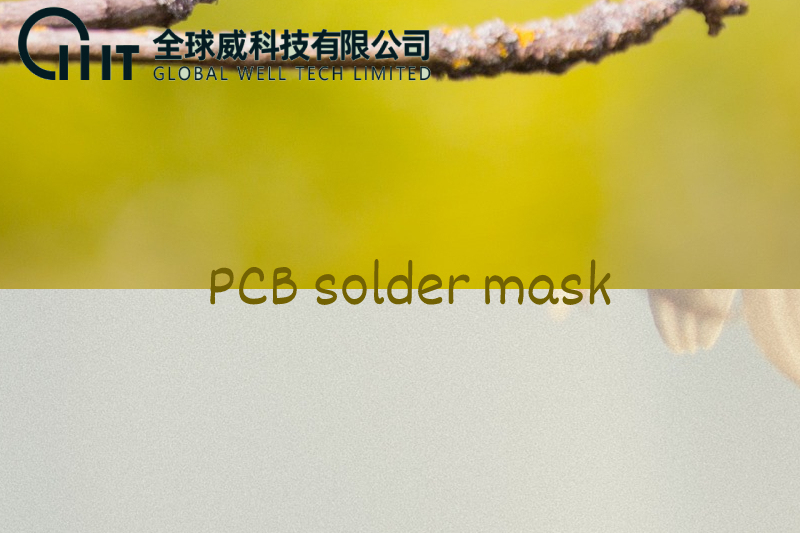Categorie
PCB solder mask
PCB solder mask
Solder Mask, Soldermask or Solder Resist is a thin protective lacquer-like polymer coating that is usually applied to the copper traces of a bare printed circuit board (PCB) for protection against oxidation, and to prevent solder bridges from forming between closely spaced solder pads. Once applied, solder mask openings must be formed for components terminal soldering.
Soldermask is a protective layer of liquid photo image able lacquer applied on the top and bottom side of a PCB Circuit Board. The function of the Soldermask is to protect the copper, apart from the solder pads, from:
1.Oxidation
2.Creating shorts during
3.Soldering (bridges)
4.Operation due to external conductive influences
5.Operation from net to net due to high Voltage spikes
6.Environmental influences like dust and other contaminations that may create shorts in the long run
The Soldermask is first printed or sprayed on to the production panel and then UV-exposed with the correct solder mask pattern, developed and dried. Soldermask is usually green but can also be applied as: black, blue, white, red, clear, etc… Click here to see how it is done in production.
Types of solder mask
1.Liquid Photo-Imageable (LPI) Solder Mask (or LPSM) ink
2.Dry Film Photo-Imageable Solder Mask (DFSM) Ink.
LPI solder mask can be silkscreened on the PCB Circuit board, exposed to the pattern and developed to provide window openings in the pattern for parts to be soldered to the copper pads. DFSM is vacuum-laminated on the PCB then exposed and developed. All two processes typically go through a thermal cure of some type after the pattern is defined although LPI solder masks are also available in ultra violet (UV) cure.
In the past, solder masks were applied in dry film sheets, but with the advent of LPI solder masks and techniques, DFSM is rarely used today.GWT uses LPI (Liquid Photo Imageable) solder masks. LPI masks are by far the most common type of mask used today. They are more reliable, can be printed very accurately, and make better contact with the surface of the board and the copper features on which they’re applied to protect. LPI solder masks are an epoxy-based material so they are very durable and nearly impossible to remove once they have been cured.
Solder Mask Registrations: what we allow and what not
1.The Soldermask may encroach on lands as long as the minimum annular ring requirements are maintained.
2.Soldermask is permitted in those PTH not intended for solder fill.
3.No isolated pads are exposed.
4.No Soldermask encroachment on edge board connector fingers or test points.
5.On SMT-pads with pitch 1,25 mm encroachment is permitted on one side of land only and does not
exceed 50 micron (2 mil).
6.On SMT-pad with pitch < 1,25 mm encroachment is permitted on one side of land only and does not
exceed 25 micron (1 mil).
How to Define Solder Mask Layer(s) in Gerber Data?
Solder Mask Layers in Gerber data should be thought of as a negative image. This means where you see color on the mask layer is where no mask coverage. Everywhere else will be covered with solder mask. Think of the solder mask as completely covering your PCB board and the solder mask files show the places where no solder mask applied.
In Gerber data of rigid boards, GTS is Top Soldermask layer and GBS is Bottom Soldermask layer.
In Gerber data of flex or rigid-flex PCBs, GTS and GBS can be both soldermask and coverlay layers.
During the working Gerber files issuing (CAM engineering) process, GWT will automatically adjust your solder mask apertures as needed for PCB production. Generally, a solder mask aperture will be adjusted so it is 4mil larger than the copper pad it is exposing (2mil larger per side). If we printed the mask exactly the same size as the copper pad, there is a good chance the mask would not be exactly centered on pad which would result in some of your copper pad being covered with solder mask. The tolerance for solder mask registration is +/-2mil, and that’s why we adjust apertures to be 2mil larger all the way around the copper feature helping to ensure the entire pad can be soldered.
There are times when a solder mask defined (SMD) pad is required. A SMD pad is when the solder mask relief is the same size or smaller than the copper pad it is exposing. These are generally used when solder mask dams are needed between surface mount devices’ pads, but there is not enough space print a dam and follow the standard soldermask swell. If you require a soldermask defined pad and do not wish solder mask clearances to be modified, you must include a fab note stating which pads should not be adjusted.
Solder Mask Thickness
According to IPC-SM-840D, there is no a specific solder mask thickness, like 20μm or 25μm, but has a limit on solder mask thickness:
“3.4.1 Solder Mask Thickness The printed board fabricator shall confirm that the minimum thickness of the solder mask on the printed board is sufficient to meet the requirements of 3.8.1. The coating thickness shall be measured by any micrometer or indicator accurate to 2.5 µm [0.0001 in] or microsection prepared in accordance with IPC-TM-650, Method 2.1.1 or Method 2.1.1.2. If a specific thickness or breakdown voltage is required or allowed, it shall be AABUS (as agreed between user and supplier).”
“3.8.1 Dielectric Strength The solder mask material shall meet or exceed the minimum value of 500 VDC per 25 µm [0.001 in] of thickness when tested in accordance with IPC-TM-650, Method 2.5.6.1. Thickness of solder mask less than 25 µm [0.001 in] shall meet an absolute minimum breakdown voltage of 500 VDC.”
0users like this.



